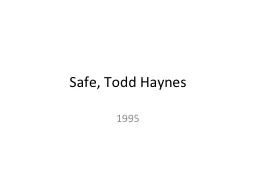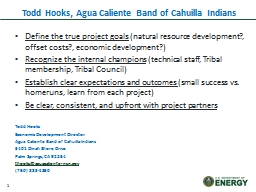PPT-Todd and Steven
Author : phoebe-click | Published Date : 2016-12-16
Divide the Estate Problem 810 Bargaining over 100 pounds of gold Round 1 Todd makes offer of Division Steven accepts or rejects Round 2 If Steven rejects estate
Presentation Embed Code
Download Presentation
Download Presentation The PPT/PDF document "Todd and Steven" is the property of its rightful owner. Permission is granted to download and print the materials on this website for personal, non-commercial use only, and to display it on your personal computer provided you do not modify the materials and that you retain all copyright notices contained in the materials. By downloading content from our website, you accept the terms of this agreement.
Todd and Steven: Transcript
Download Rules Of Document
"Todd and Steven"The content belongs to its owner. You may download and print it for personal use, without modification, and keep all copyright notices. By downloading, you agree to these terms.
Related Documents














